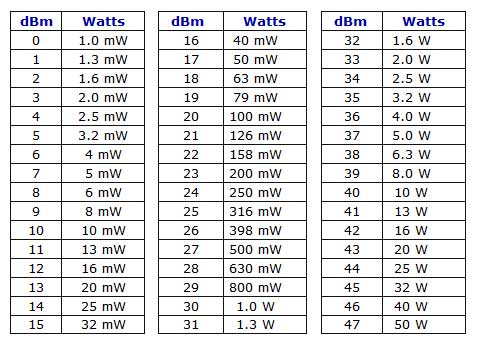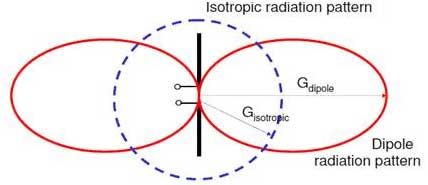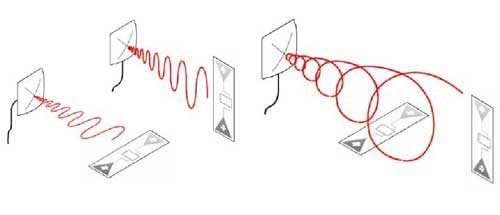how to compare different RFID reader power outputs
In some RFQ’s and RFP’s people ask about RFID readers radiating power entities. This topic has also come up in discussions with customers. It is not always clear how to compare entities of different formats. Read on to understand what different RFID power entities mean, and how they can be utilized.
RFID radiating power is an essential entity describing reader performance, although it must be noted that it is not the only one. To put it simply – more power out from an antenna means that tags further away sense the reader. This is a good thing – if long reading distance is the goal. But power output alone does not describe all aspects of reader performance. It does not, for instance, describe receiver sensitivity – from how far a reader can sense the tag. In addition, it does not describe readers’ speed or ability to read tags without orientation sensitivity etc.
There are two common ways to indicate radiating power: milliwatt (mW) and some form of decibels (dB). It gets even more complex when different types of decibel figures are compared. This is no problem if it is done correctly, but mistakes are easily done.
how to determine reading distance
An example: Other things equal – which reader has a longer reading distance, a reader with 30dBm (1.0W) ERP or a reader with 32dBm (1.6W) EIRP? (You’ll find the answer later in this article.)
Decibels (dB) describe relations of two figures on a logarithmic scale.
0dB: x=1*y
3dB: x=2*y
6dB: x=4*y
10dB: x=10*y
20dB: x=100*y
and
-3dB: x=y/2
-10dB: x=y/10
When RFID readers’ power is discussed, dB is not just a plain dB, but dBm, dBi etc. The letter after dB describes what the figure is compared to. For example, an antenna with gain 3dBi emits, in the main direction, two times the power of an isotropic reference antenna. The “i” in dBi stands for the isotropic reference antenna.
RFID readers’ power output depends on two components. These are power output going into the antenna and antenna gain. Power going into the antenna (RF power) is usually indicated in milliwatt (mW) or in dBm. In this case, dBm describes the power compared to 1mW. The table below describes the relation between dBm and mWon.

- dBi describes gain compared to isotropic reference antenna
- dBd describes gain compared to reference dipole antenna
- dBic describes gain compared to reference isotropic circular polarized antenna
We have seen also dBiL being used, it refers to reference a linear polarized antenna, but the relation to dBi is not clear*), and we don’t recommend the use of dBiL.
There is a clear relation between the established reference antennas.
- The dipole antenna radiates more to directions in a 90-degree angle to the antenna dipole than the ideal isotrophic antenna, 0dBd = 2.14 dBi

- Isotropic circular polarized antenna “looses” some of the radiation power in the circulating polarization due to polarization mismatch when the tag antenna is linear. As a result 0dBic = -3 dBi

In European legislation radiating power limits are described in relation to dipole antennas and ERP (Efficient Radiating Power) is used as a measure. An example: RF power is 27dBm (500mW) and antenna has gain of 5dBi. ERP = 27dBm + 5dBi -2.15 = ca. 30dBm (1.0W)
In US legislation EIRP (Equivalent Isotropical Radiated Power) is used. Power is compared to isotropic reference antenna. With same reader and antenna as above (RF power is 27dBm (500mW) and antenna has gain of 5dBi) EIRP = 27dBm + 5dBi = 32 dBm (1.6W)
Remember the question posed above? The question was: which reader has a longer reading distance, a reader with 30dBm (1.0W) ERP or a reader with 32dBm (1.6W) EIRP?
The answer is that the reader with radiating power of 1W ERP is the same as the reader with radiating power of 1.6W EIRP.
Formulas:
- ERP in dBm = (RF power in dBm) + (antenna gain in dBi) -2.15dB, this can be converted to mW using table above
- EIRP in dBm = (RF power in dBm) + (antenna gain in dBi), this can be converted to mW using table above
- dBi = dBic – 3dB (in RFID use)
- dBi = dBd +2.15dB
More examples:
A reader with 500mW RF power, antenna with 6dBic gain
- 500mW = 27dBm
- ERP =27 dBm + (6dBic -3dB) -2.15dB = ca. 28dBm (630mW)
- EIRP =27 dBm + (6dBic-3dB) = 30 dBm (1W)
A reader with 400mW RF power, antenna with 5 dBi gain
- 400mW = ca 26dBm
- ERP = 26 dBm + 4dBi -2.15dB = ca. 28 dBm (630mW)
- EIRP = 26dBm + 4dBi =30 dBm (1W)
Want to also understand how to apply RSSI filters for optimal RFID performance? Read our expert article.